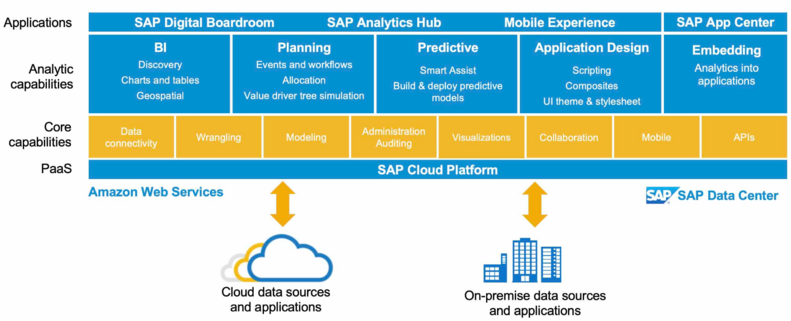SAP Analytics Cloud (SAC), an integral component of the SAP Business Technology Platform (BTP), is a sophisticated platform designed to unify business intelligence, predictive analytics, and planning into a cohesive solution. By seamlessly integrating with both SAP and non-SAP data sources—whether on-premises or cloud-based—SAC provides real-time insights and actionable analysis, tailored to meet the complex needs of modern businesses.
The architecture of SAC is built on a robust three-layer framework. The core layer, featuring the SAP HANA database and application server, ensures high-speed data processing and analytics through its advanced in-memory technology. This allows users to perform complex calculations and generate insights quickly and efficiently. The data layer consolidates and integrates diverse data sources, offering a comprehensive view of organizational data by connecting various data origins, including enterprise applications, external databases, and cloud services. This integration facilitates a unified environment where all relevant information is accessible. The user layer, accessible via web and mobile applications, provides intuitive interfaces and tools for data interaction, report creation, and analysis. This flexibility ensures users can work from any location, whether remotely or on-the-go.
Recent updates to SAC have significantly enhanced its functionality. The integration of stories and analytic applications into a single framework has streamlined the user experience, consolidating various analytical tasks into one environment. Advanced design features now allow for the creation of highly customized and visually appealing reports and dashboards. New capabilities, such as live data commenting, facilitate real-time collaboration by enabling users to add comments directly to data points, improving communication and coordination among team members.
Looking to the future, SAC is expected to introduce several new features that will further expand its capabilities. Enhanced support for custom data sources through new connectors will enable users to integrate and analyze data from a broader range of origins, increasing the platform's versatility. Additional design improvements, including advanced custom widgets and dynamic visibility options, will provide users with greater flexibility in tailoring their analytics presentations.
One of SAC’s most notable features is its self-service analytics capabilities. By empowering users to independently create dashboards and reports, SAC reduces reliance on IT departments and boosts organizational agility. This self-service approach allows users to quickly adapt to changing business needs and explore data on their own terms, leading to faster and more informed decision-making. Furthermore, SAC's robust collaboration tools enhance the sharing and discussion of analytics content. Users can annotate reports, initiate discussions, and assign tasks within the platform, fostering better teamwork and facilitating data-driven decision-making across teams.
In conclusion, SAP Analytics Cloud is a powerful and versatile platform that integrates business intelligence, predictive analytics, and planning into a unified solution. With its advanced architecture, recent enhancements, and future developments, SAC continues to set the standard for modern analytics solutions. By offering real-time insights, advanced design capabilities, and robust collaboration tools, SAC empowers organizations to make data-driven decisions, improve teamwork, and swiftly adapt to evolving business needs.





Comments